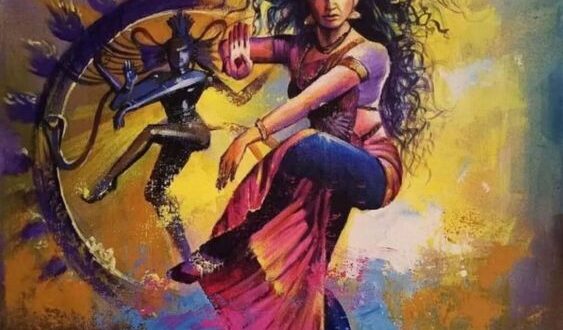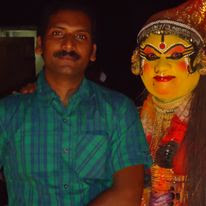BHARATANATYAM
- Get link
- X
- Other Apps
is the oldest traditional classical dance in India.
” Bharatanatyam is a classical Indian dance form with a rich and ancient history.
Bharatanatyam, a quintessential Indian classical dance form, embodies the essence of India's rich cultural heritage, transcending time and space. Rooted in the ancient temple rituals of Tamil Nadu, Bharatanatyam has evolved into a globally acclaimed art form, captivating audiences with its intricate movements, expressive storytelling, and profound spirituality. In this comprehensive exploration, we delve deep into the origins, evolution, and enduring significance of Bharatanatyam, uncovering its timeless allure and universal appeal.
Origins and Historical Significance:
The origins of Bharatanatyam can be traced back to the temples of Tamil Nadu, where it served as a sacred ritual offering to the deities. Dating back over two millennia, Bharatanatyam was an integral part of temple ceremonies, performed by Devadasis, or temple dancers, as a form of devotion and worship. The dance form flourished under royal patronage, with its practitioners revered as embodiments of divine grace and beauty.
Revival and Renaissance:
The 20th century witnessed a significant revival of Bharatanatyam, spearheaded by visionary reformers such as Rukmini Devi Arundale. Recognizing the need to preserve and propagate this ancient art form, Rukmini Devi Arundale founded the Kalakshetra Foundation in Chennai, pioneering a movement to redefine Bharatanatyam as a dignified and accessible form of artistic expression. This renaissance marked a pivotal moment in the history of Bharatanatyam, steering it away from its earlier associations with the Devadasi system and towards a more inclusive and respected status.
Elements of Bharatanatyam:
Bharatanatyam is characterized by its intricate blend of Nritta, Nritya, and Natya, each representing a distinct aspect of the dance form. Nritta encompasses pure dance movements, characterized by rhythmic footwork and geometric patterns, while Nritya focuses on expressive storytelling through gestures, facial expressions, and body language. Natya refers to dramatic elements, including character portrayal and narrative enactment, which add depth and dimension to Bharatanatyam performances.
Technique and Aesthetics:
Central to Bharatanatyam's aesthetic appeal are its precise footwork, graceful postures, and eloquent hand gestures, known as mudras. These symbolic gestures, drawn from ancient texts and scriptures, convey a myriad of emotions and meanings, ranging from love and devotion to valor and triumph. Accompanied by intricate facial expressions, or Abhinaya, Bharatanatyam dancers breathe life into age-old tales and mythological narratives, transporting audiences to realms of enchantment and wonder.
Costumes and Ornaments:
The traditional attire of Bharatanatyam, known as the 'aranggetram', is a visual feast for the senses, featuring vibrant silk sarees embellished with intricate gold borders and traditional motifs. Adorned with elaborate jewelry, including temple jewelry and anklets adorned with tiny bells, Bharatanatyam dancers radiate an aura of regal splendor and timeless elegance. These ornate costumes and accessories not only enhance the visual appeal of the performance but also evoke a sense of reverence and grandeur befitting the sacred origins of Bharatanatyam.
Music and Rhythm:
Integral to Bharatanatyam is its close relationship with classical South Indian music, which provides the melodic and rhythmic framework for the dance. The soul-stirring strains of the Carnatic music, accompanied by traditional instruments such as the mridangam, veena, and flute, create a mesmerizing backdrop for Bharatanatyam performances, elevating them to sublime heights of artistic expression. The intricate interplay between music and movement, rhythm and grace, infuses Bharatanatyam with a sense of divine harmony and celestial beauty.
Global Recognition and Contemporary Relevance:
In recent decades, Bharatanatyam has garnered widespread acclaim on the global stage, captivating audiences across continents with its universal themes and timeless beauty. From prestigious dance festivals to international tours, Bharatanatyam has transcended cultural boundaries, captivating hearts and minds with its profound spirituality and aesthetic brilliance. Its ability to adapt to contemporary sensibilities while preserving its traditional essence ensures Bharatanatyam's continued relevance in today's world, inspiring generations of artists and enthusiasts to embrace its legacy and celebrate its enduring beauty.
Bharatanatyam stands as a beacon of India's cultural heritage, illuminating the path of artistic excellence and spiritual enlightenment. From its ancient origins in the temple rituals of Tamil Nadu to its global acclaim on the world stage, Bharatanatyam embodies the timeless beauty, grace, and spirituality of the human experience. As it continues to evolve and adapt to changing times, Bharatanatyam remains a vibrant symbol of India's rich cultural identity, inspiring awe and admiration in all who witness its transcendent beauty.
For more details please visit > Kerala tourism
More details for Car and tempo traveller rentals
More details for Kerala's Local destination
- Get link
- X
- Other Apps


LEAVE A REPLY